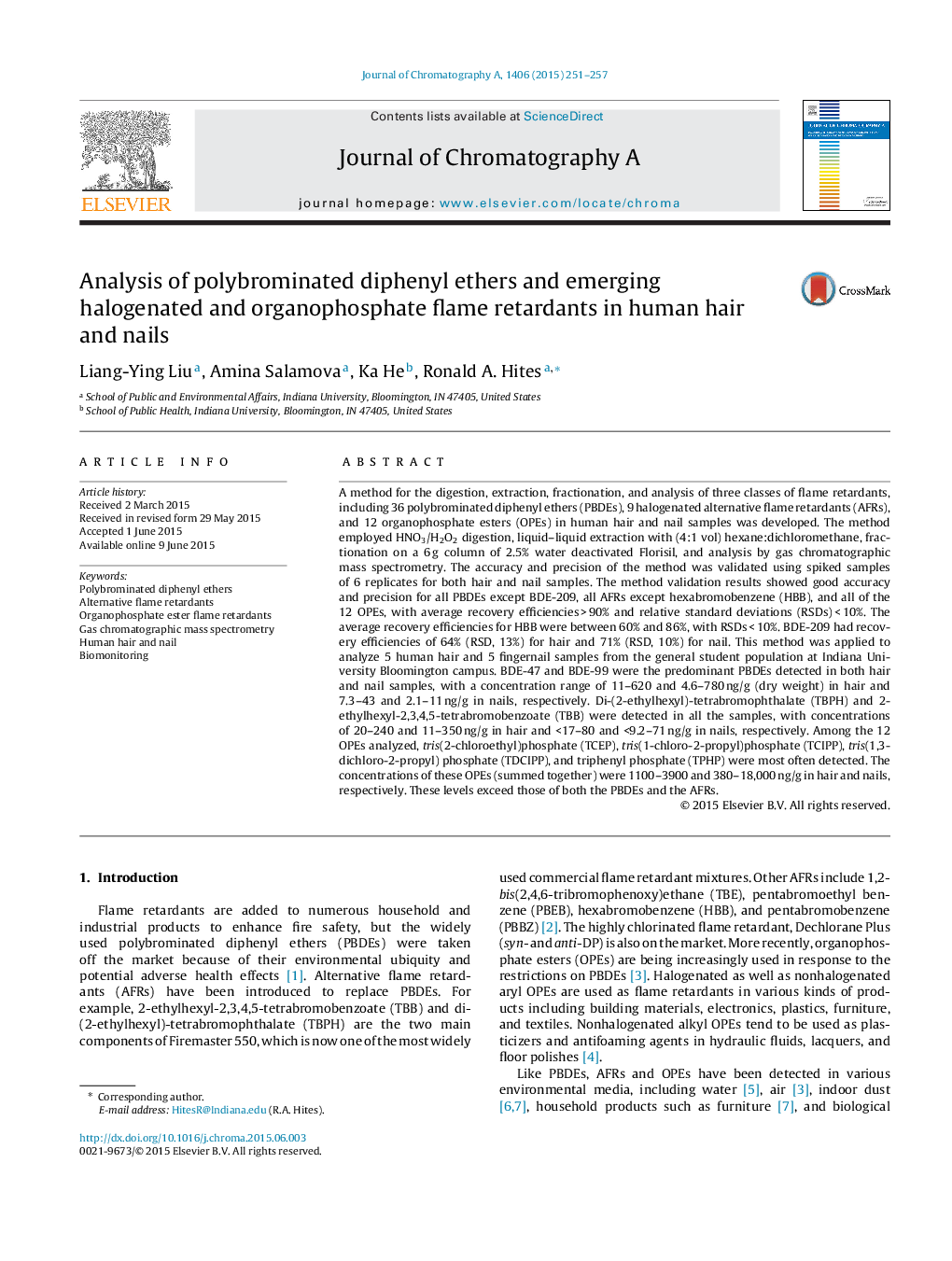| Article ID | Journal | Published Year | Pages | File Type |
|---|---|---|---|---|
| 1199249 | Journal of Chromatography A | 2015 | 7 Pages |
•A method for the simultaneous analysis of PBDEs, AFRs, and OPEs in human hair and nails was developed.•The developed method is novel and sensitive for 57 environmentally relevant flame retardants.•Both restricted and emerging flame retardants were detected in hair and nail samples by gas chromatographic mass spectrometry.
A method for the digestion, extraction, fractionation, and analysis of three classes of flame retardants, including 36 polybrominated diphenyl ethers (PBDEs), 9 halogenated alternative flame retardants (AFRs), and 12 organophosphate esters (OPEs) in human hair and nail samples was developed. The method employed HNO3/H2O2 digestion, liquid–liquid extraction with (4:1 vol) hexane:dichloromethane, fractionation on a 6 g column of 2.5% water deactivated Florisil, and analysis by gas chromatographic mass spectrometry. The accuracy and precision of the method was validated using spiked samples of 6 replicates for both hair and nail samples. The method validation results showed good accuracy and precision for all PBDEs except BDE-209, all AFRs except hexabromobenzene (HBB), and all of the 12 OPEs, with average recovery efficiencies > 90% and relative standard deviations (RSDs) < 10%. The average recovery efficiencies for HBB were between 60% and 86%, with RSDs < 10%. BDE-209 had recovery efficiencies of 64% (RSD, 13%) for hair and 71% (RSD, 10%) for nail. This method was applied to analyze 5 human hair and 5 fingernail samples from the general student population at Indiana University Bloomington campus. BDE-47 and BDE-99 were the predominant PBDEs detected in both hair and nail samples, with a concentration range of 11–620 and 4.6–780 ng/g (dry weight) in hair and 7.3–43 and 2.1–11 ng/g in nails, respectively. Di-(2-ethylhexyl)-tetrabromophthalate (TBPH) and 2-ethylhexyl-2,3,4,5-tetrabromobenzoate (TBB) were detected in all the samples, with concentrations of 20–240 and 11–350 ng/g in hair and <17–80 and <9.2–71 ng/g in nails, respectively. Among the 12 OPEs analyzed, tris(2-chloroethyl)phosphate (TCEP), tris(1-chloro-2-propyl)phosphate (TCIPP), tris(1,3-dichloro-2-propyl) phosphate (TDCIPP), and triphenyl phosphate (TPHP) were most often detected. The concentrations of these OPEs (summed together) were 1100–3900 and 380–18,000 ng/g in hair and nails, respectively. These levels exceed those of both the PBDEs and the AFRs.
